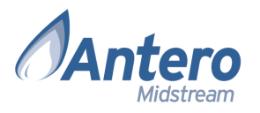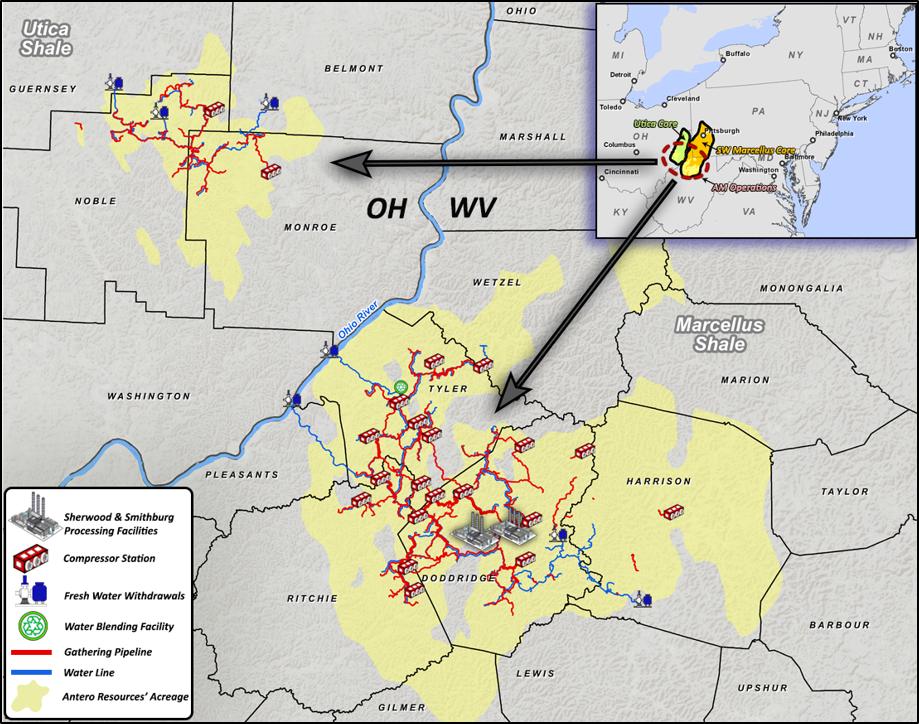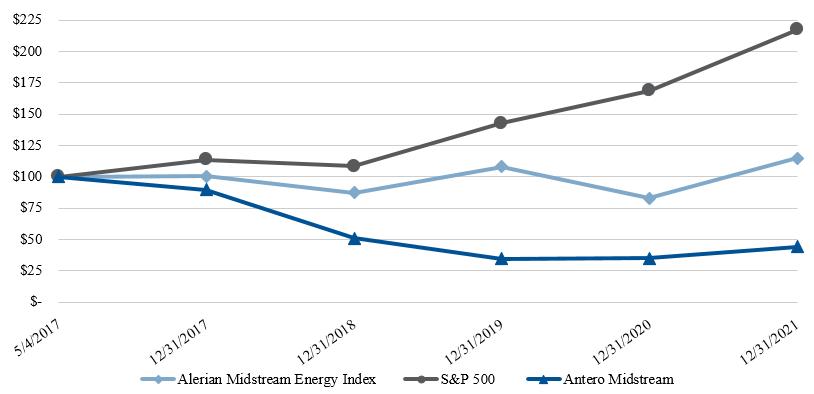new gathering and compression, water handling or other assets may not be able to attract enough throughput to achieve our expected investment return, which could adversely affect our financial condition and results of operations. In addition, adding to our existing assets may require us to obtain new rights-of-way prior to constructing new pipelines or facilities. We may be unable to timely obtain such rights-of-way to connect new natural gas supplies to our existing gathering pipelines or capitalize on other attractive expansion opportunities. Additionally, it may become more expensive for us to obtain new rights-of-way or to expand or renew existing rights-of-way. If the cost of renewing or obtaining new rights-of-way increases, our cash flows could be adversely affected.
Recent action and the possibility of future action on trade by U.S. and foreign governments has increased the costs of certain equipment and materials used in the construction of our assets and has created uncertainty in global markets, which may adversely affect our income from operations and cash flows.
The construction of gathering pipelines, compressor stations, processing and fractionation facilities and water handling assets is subject to construction cost overruns due to costs and availability of equipment and materials such as steel. If third party providers of steel products essential to our capital improvements and additions are unable to obtain raw materials, including steel, at historical prices, they may raise the price we pay for such products. On March 8, 2018, the President of the United States issued two proclamations directing the imposition of ad valorem tariffs of 25% on certain imported steel products and 10% on certain imported aluminum products from most countries, with limited exceptions. On May 31, 2018, the U.S. announced that it would also impose steel and aluminum tariffs on Canada, Mexico and the 28 member countries of the European Union. Argentina, Australia, Brazil and South Korea implemented measures to address the impairment to U.S. national security attributable to steel and/or aluminum imports that were deemed satisfactory to the United States. On May 19, 2019, the U.S. announced that Canada and Mexico had also implemented satisfactory measures to address the threatened impairment to U.S. national security caused by steel and aluminum imports from those countries. As a result, imports of steel from Argentina, Australia, Brazil, Canada, Mexico and South Korea and aluminum from Argentina, Australia, Canada and Mexico have been exempted from the imposition of tariff-based remedies, but the United States has implemented quantitative restrictions in the form of absolute quotas for steel article imports from Argentina, Brazil and South Korea and aluminum products from Argentina, meaning that imports in excess of the allotted quota will be disallowed. In addition, effective August 13, 2018, the United States announced that it would impose a 50% ad valorem tariff on steel articles imported from Turkey, which remained in effect until May 21, 2019, at which time a 25% ad valorem tariff on steel articles imported from Turkey was reimposed, consistent with the tariff on imports from most countries. On January 24, 2020, the United States announced that an additional 25% ad valorem tariff would be imposed on certain derivative steel article imports from all countries except Argentina, Australia, Brazil, Canada, Mexico and South Korea, and that an additional 10% ad valorem tariff would be imposed on certain derivative aluminum article imports from all countries except Argentina, Australia, Canada and Mexico. On August 6, 2020, the U.S. re-imposed the 10% ad valorem tariff on imports of non-alloyed unwrought aluminum from Canada due to a surge in imports of those articles, but on October 27, 2020, retroactively reinstated Canada on the list of countries excluded from tariffs for those articles. On August 28, 2020, the U.S. announced that it would lower one of the quantitative limitations on imports of certain steel articles from Brazil for the remainder of 2020. The U.S. provided relief from these limitations in specific circumstances, namely for production activities with contracts for steel imports from Brazil during the fourth quarter of 2020 entered into before August 28, 2020 that met other specified criteria. In 2020, the U.S. and Mexico also engaged in discussions regarding steel imports pursuant to their Joint Statement of May 17, 2019. On August 31, 2020, the Office of the U.S. Trade Representative announced that Mexico would establish a strict monitoring regime of exports of standard pipe, mechanical tubing and semi-finished steel products to the U.S. through June 1, 2021. The U.S. agreed to continue to exempt Mexico from duty on these imports. On November 5, 2020, the Office of the U.S. Trade Representative announced that Mexico agreed to establish a strict monitoring regime for exports of certain grain-oriented electrical steel (“GOES”)-containing products into the U.S., and the U.S. agreed that Mexico would not be subject to any adjustments of imports of electrical transformers or related parts. In addition, the U.S.-Mexico-Canada Free Trade Agreement (“USMCA”) became effective on July 1, 2020. The USMCA includes agreements related to steel and aluminum imports, including changes to rules-of-origin requirements for steel and aluminum materials originating in North America, rules for determining whether goods containing materials from non-USMCA countries are considered “North American” under the Harmonized Tariff Schedule, and tariff exemptions for certain automotive imports. Following these proclamations, domestic prices for steel have risen and are expected to continue to rise. These price increases may result in increased costs associated with the continued build-out of our assets, as well as projects under development. Because we generate substantially all of our revenue under agreements with Antero Resources that provide for fixed fee structures, we will generally be unable to pass these cost increases along to our customers, and our income from operations and cash flows may be adversely affected.
If third-party pipelines or other midstream facilities interconnected to our gathering and compression systems become partially or fully unavailable, our operating margin and cash flows could be adversely affected.
Our gathering and compression assets connect to other pipelines or facilities owned and operated by unaffiliated third parties. The continuing operation of third-party pipelines, compressor stations and other midstream facilities is not within our control. These pipelines, plants and other midstream facilities may become unavailable because of testing, turnarounds, line repair, maintenance,


